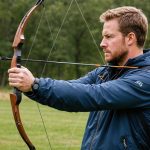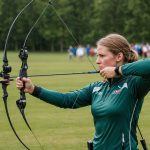Understanding Muscle Imbalances between Quadriceps and Hamstrings
Examining the relationship between the quadriceps and hamstrings involves understanding how these muscle groups work together to stabilize and move the knee. The quadriceps, located at the front of the thigh, extend the knee, while the hamstrings, situated at the back, help in knee flexion. This complementary action maintains balance and allows for smooth movement.
Muscle imbalances between these groups can arise from various causes, such as improper training regimens focusing more on one group over the other, or lack of attention to flexibility and muscular endurance. These disparities can significantly impact athletic performance, as well-developed quadriceps paired with weaker hamstrings may lead to reduced efficiency during activities such as running or jumping.
Also to discover : Exploring the Lasting Impact of Stability Balls on Core Training Exercises
Neglecting to balance the strength of the quadriceps and hamstrings not only affects performance but also increases the risk of injuries. For instance, inadequate hamstring strength compared to the quadriceps may lead to knee injuries such as anterior cruciate ligament (ACL) tears. Ensuring a balanced approach in training routines is essential for minimizing the risk of injury and promoting optimal physical function. Identifying and addressing muscle imbalances can aid in crafting a more effective and safer exercise regime, ultimately enhancing overall performance and protecting against potential injuries.
Importance of Balance in Strength Training
Achieving harmony in strength training is crucial for optimising athletic performance. When muscles across the body are balanced, it translates to enhanced agility, coordination, and power in sports. Imbalanced muscles, however, can lead to decreased performance and even impede progress, affecting an athlete’s capability to perform efficiently.
Have you seen this : Top Plant-Based Protein Sources for Strength Training Vegetarians: Fuel Your Fitness Journey!
Balancing muscle strength is critical for both injury prevention and recovery. An imbalance, for instance, between the quadriceps and hamstrings can put undue stress on joints, increasing the risk of strains or tears. By evenly developing muscle groups, athletes not only guard against injuries but also recover more swiftly if injuries do occur.
Sport-specific demands significantly influence the focus areas in strength training. For instance, football players require robust lower body strength for stability and power, while swimmers often concentrate on shoulder and core strength. Recognising these demands allows athletes to tailor their training to ensure comprehensive muscle development and better performance outcomes.
In summary, prioritising muscle balance within training routines not only assists in enhancing overall athletic prowess but also fortifies the body against potential strains and injuries. By understanding and addressing specific sport requirements, athletes can maintain peak performance levels.
Step-by-Step Guide to Restore Balance
Restoring physical balance after an injury or period of inactivity is crucial. Rehabilitation exercises are key to this, focusing on both strength restoration and functional movement.
Initial Assessment
Before diving into corrective exercises, start with an initial assessment to identify any strength imbalances. Essential tools for this include resistance bands and mirrors for visual feedback. Indicators of imbalance might be unequal muscular size or discomfort during specific movements. Should there be doubt about the severity, seeking a professional evaluation can offer more precise insights.
Targeted Exercises for Quadriceps
To target the quadriceps, consider exercises like squats and leg presses. These should be performed with the correct form, maintaining a straight back and knees tracked over the toes. For varying fitness levels, adjustments can be made, such as assisted squats for beginners and weighted squats for advanced exercisers.
Targeted Exercises for Hamstrings
Effective exercises for hamstrings include hamstring curls and deadlifts. Emphasise avoiding injury by ensuring proper technique—slow, controlled movements are crucial. Flexibility training, like static stretches, can complement strength work, enhancing overall hamstring health.
Integrating Balance Restoration into Workouts
Balancing a workout routine involves gradual progression, adding exercises that address identified weaknesses over time. Maintaining a log can help track improvements, while periodic reassessment ensures long-term balance and injury prevention.
Corrective Techniques and Additional Strategies
Enhancing balance and flexibility requires a combination of effective corrective techniques and a dedication to rehabilitation methods. Achieving success in this endeavour often begins with focused exercises designed to realign the body’s natural posture. Key corrective techniques aim to improve balance through exercises like single-leg stands or balance boards, which help enhance core stability and coordination. Furthermore, maintaining strength is crucial in this context, providing a foundation for better balance and recovery.
The role of dynamic stretching cannot be underestimated, especially for those seeking to boost flexibility. Dynamic stretching involves movement-based stretching activities, such as leg swings or arm circles, which enhance muscle elasticity and joint mobility. This approach prepares the body for physical activity and reduces the risk of injury by encouraging more extensive ranges of motion.
In addition to these, incorporating foam rolling into one’s routine aids in muscle recovery and relaxation. Foam rolling targets tight areas, promoting blood flow and easing muscle tension. Using foam rollers effectively can enhance overall rehabilitation methods, leading to improved performance and reduced discomfort. These strategies collectively contribute to a well-rounded approach for maintaining strength and promoting optimal physical health.
Case Studies and Testimonials
In exploring the realm of balance restoration, real-life success stories serve as a beacon of hope and inspiration. These narratives not only highlight individual achievements but provide practical insights into the journey of injury recovery and strength improvement. Take, for example, the case of Emma, a professional athlete who, after a debilitating ankle injury, embarked on a comprehensive rehabilitation plan. Through physiotherapy focused on balance, she not only recovered but achieved new levels of strength and performance.
Testimonials from athletes like Emma reveal significant improvements in their overall health and athletic performance. Such personal accounts underscore the transformative power of dedicated balance training, as individuals often find themselves surpassing previous benchmarks of strength and endurance. They provide real, actionable insights that can guide future applications in therapy and athletic training.
Moreover, the lessons gleaned from these case studies are crucial. They highlight effective strategies and techniques that have consistently led to successful outcomes. For practitioners, these examples offer a practical framework for crafting bespoke rehabilitation plans aimed at balance restoration. Through these stories, we gain a clearer vision of the potential pathways to enhanced physical health and performance.











